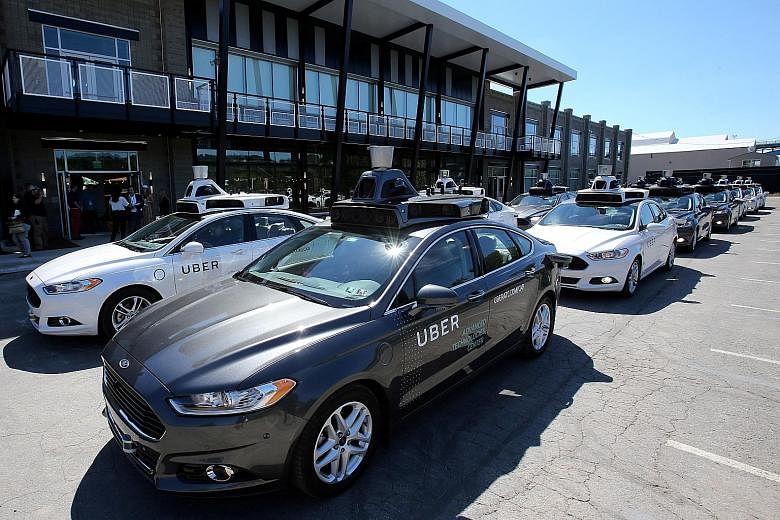Not so long ago, Alphabet Inc's self-driving ambitions seemed to have lost momentum despite the company being among the earliest to put experimental autonomous cars on the road.
There was no business plan and Alphabet was in danger of losing its first-mover advantage to traditional carmakers and Silicon Valley start-ups, including Uber Technologies Inc. It looked as though the company had started another moonshot.
Then Alphabet got serious. Late last year, the company spun off the self-driving arm into its own entity, called Waymo, which began testing a driverless taxi service in Phoenix featuring minivans loaded with in-house technology last month.
Waymo also pulled out a legal bazooka, suing Uber and accusing the ride-hailing company of stealing trade secrets when it acquired Otto, the autonomous vehicle start-up founded by Mr Anthony Levandowski, who previously helped run Google's driverless arm.
On Tuesday, Uber fired Mr Levandowski, a key executive, because he refused to turn over allegedly stolen documents to the court. In an instant, Waymo had separated a key rival from its star engineer.
Only a few months ago, critics suggested Alphabet had squandered its head start in driverless technology. Waymo had lost several engineers - including its original tech lead, Mr Chris Urmson, and several people recruited by Mr Levandowski - and cut a deal with only one carmaker, Fiat Chrysler.
The car industry and a bevy of start-ups were aggressively working on driverless technology. Tesla Inc, meanwhile, was touting Autopilot.
But behind the scenes, Waymo was shoring up its engineering bench and improving the technology. Since being spun out of Alphabet's X lab in December, the division has hired aggressively, including several engineers from Terra Bella, the satellite division Google sold earlier this year, according to a person familiar with the situation.
Waymo also designed new hardware that helps vehicles see their surroundings better. Another car manufacturing deal with Honda Motor is in the works and, earlier this month, Waymo announced a United States partnership with Uber nemesis Lyft Inc.
Uber's fortunes, meanwhile, have cratered. Executives have been leaving amid a broader culture crisis, ignited by claims of pervasive sexual harassment across the company. Former US Attorney-General Eric Holder is expected to issue an internal report on this issue to the company this week.
Among those who have left: Mr Sherif Marakby, a high-profile hire from Detroit responsible for deals with carmakers at Uber's self-driving unit. Last month, he returned to Ford.
Several other engineers from Uber's self-driving programme have also recently left, defecting for autonomous companies started by former Uber and Waymo roboticists, according to their LinkedIn profiles.
While the first driverless cars are not expected on US highways for five to 10 years, the emerging industry is already hotly contested. Sidelining or at least hobbling Uber would give Waymo time to shore up its position.
But Uber chief Travis Kalanick is a notoriously dogged competitor who believes his company's survival depends on mastering driverless technology. Uber could partner with other companies to build the technology and already has a massive global driving network in place, a key attribute for collecting driverless data.
Meanwhile, the court battle is far from over. Firing Mr Levandowski buttresses Uber's case that it never had access to the trade secrets he allegedly downloaded before quitting Alphabet. Uber also says it developed the underlying Lidar technology without his input.
From a legal standpoint, Uber had little choice but to push Mr Levandowski out. Doing so shows the company is complying with a court order and not trying to shield the executive accused of stealing thousands of documents.
The move also could presage some kind of legal settlement for Uber. There also remains a chance the case moves to criminal court. Now that he is no longer employed by and beholden to Uber, Mr Levandowski could cooperate with prosecutors in exchange for immunity - a switch that could prove detrimental to Uber.
"The same way Waymo improved its position by getting Uber to cut Mr Levandowski, Uber improved its position by distancing themselves from him," says Mr Jim Pooley, a Silicon Valley intellectual property lawyer who is not involved in the case.
"This is all about risk reduction."
BLOOMBERG

